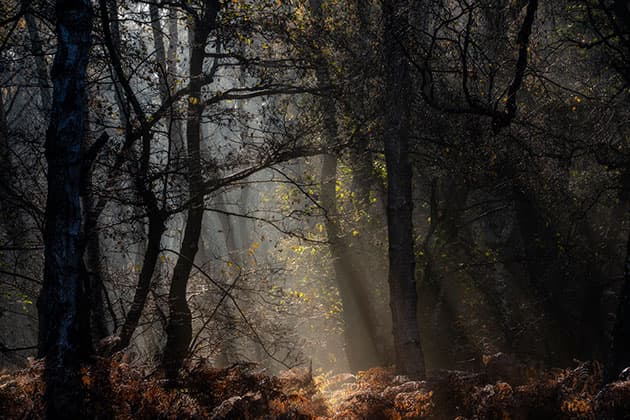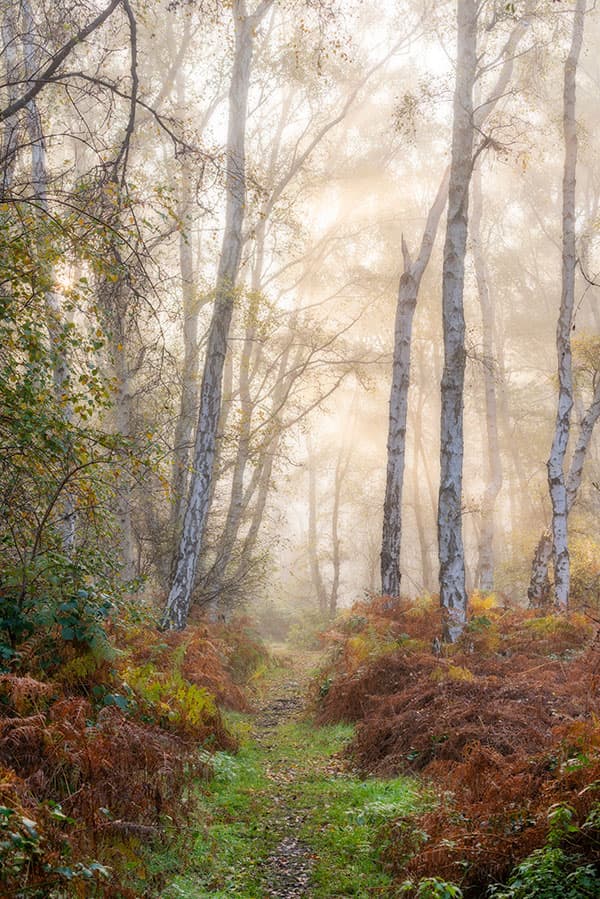
Take your time to identify different viewpoints that frame a scene. Credit: James Abbott
If you go down to the woods today, be sure to take your camera. Forests have long been considered magical places to different groups of people, and photographers are certainly no exception. At different times of the year, with the right weather conditions at the right time of day, images can present themselves at every corner, and on a good day you can easily shoot a whole portfolio in just a couple of hours.
Planning woodland shoots
The biggest challenge in the woods is finding order in the chaos, and it can take time to learn how to identify viewpoints that suit you. Typical compositions see photographers focusing on a row of trees with the ground taking up the bottom third of the frame, centrally composed trees that stand out from their background, compositional devices such as framing and lead-in lines using forest tracks, and of course environmental conditions such as backlighting.
These are just a few ways to approach woodland photography, but before even heading down to your local woods there are a few things you can do to make your visit more successful, and it all comes down to a little planning. Sunrise is one of the best times to shoot in woodland because of the quality of light and the increased chance of mist. Mist is great for this type of landscape photography because it creates mood and atmosphere, so set up your woodland location as a favourite in your preferred weather app and keep an eye out for reports of mist and fog around sunrise.

For misty conditions, head to your local woodland for a sunrise shoot. Credit: James Abbott
While fog will always produce amazing results, don’t be put off by clearer sunny days either because the results you’ll achieve will be different and often equally as interesting. Even rainy days will produce unique results. Plus, when shooting in the woods it’s harder for sunlight to penetrate the trees than in an open area, so it’s not uncommon to be able to keep shooting as late as 10am. Autumn, winter and spring are generally the best for woodland photography as sunrise isn’t too early and there’s more chance of mist during these seasons, but summer can also yield interesting results.
To be prepared for a woodland shoot you’ll need to keep an eye on the weather and aim to be on location half an hour before sunrise, if not earlier. This will give you time to look around and hopefully find suitable trees to shoot so that you’re set-up and ready to shoot before the light begins to look its best. In terms of the set-up, make sure you have a telephoto lens and a tripod to avoid camera shake during typically long exposures. You generally won’t need filters, but in some situations you may find that a polarising filter is great for reducing harsh light and increasing colour saturation.
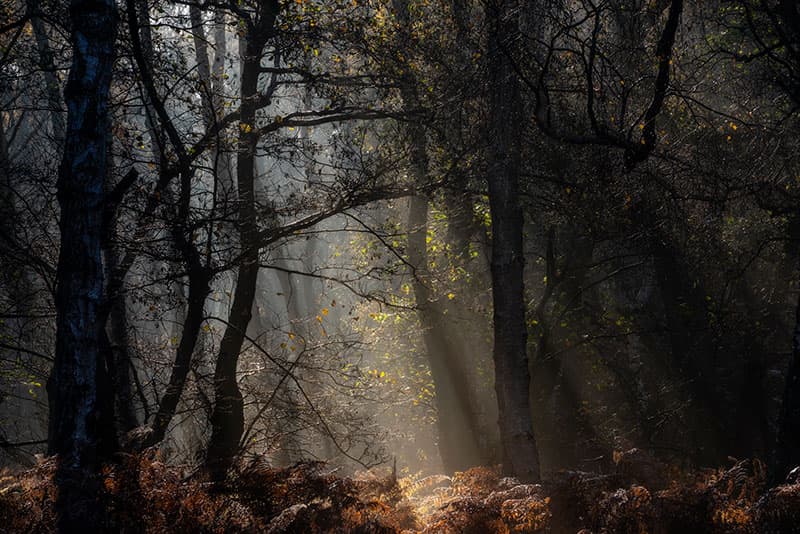
It’s harder for sunlight to penetrate the trees, which allows you to shoot for longer in the mornings. Credit: James Abbott
Cinematic lighting
Typical standard camera settings are aperture priority at f/11 with ISO set to 100 for optimum image quality. This often means slow shutter speeds that the camera will set automatically, so if images are too light and dark you’ll also need to apply exposure compensation to take control of over or underexposure. But don’t necessarily lighten an image so it’s ‘correctly exposed’ – try to expose creatively for the scene in order to get more cinematic-looking results.
The absolute key to success, like most landscape subjects, is lighting, and the more dramatic the better. Shooting into the low sun using backlighting to add drama to the scene is the easiest way to create eye-catching images. Side lighting can also produce equally impressive results. Generally speaking, shooting with the sun behind you will produce a flat-looking scene that lacks contrast; it’s the contrast between the light and dark parts of the scene that creates the most interesting images with a cinematic look and feel.
In a nutshell, the way to capture more cinematic light is to shoot back- and side-lit scenes with high contrast. Expose for highlights to maintain detail here because shadows can be recovered effectively in post-processing, especially if you’re shooting in raw, which is the best file format to use in
most situations.
Telephoto vs wideangle lenses
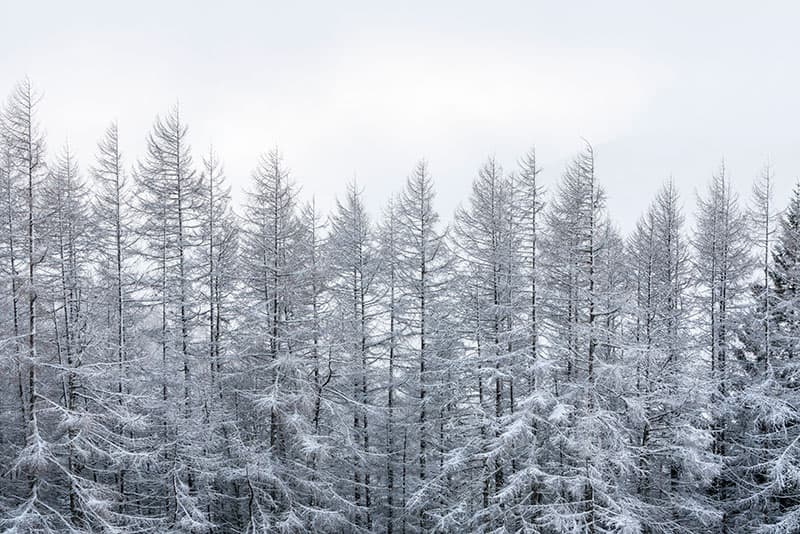
Credit: James Abbott
The best type of lens to use for woodland photography is a telephoto in the region of 70-200mm, or if you don’t have one of these a superzoom or any lens over 100mm is ideal. With a telephoto lens you have to stand further away from the trees, which reduces converging verticals or, in most cases, eliminates them. Converging verticals are created when straight vertical lines such as trees or the sides of buildings appear to get closer together at the top, and is more common with wideangle lenses when you tilt the camera back to fit the subject in.
Focus stacking
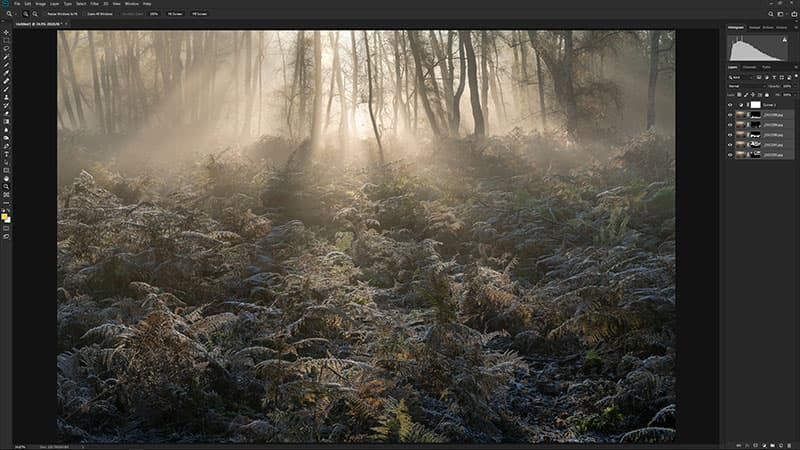
Credit: James Abbott
When shooting with a telephoto lens you may find you need to focus stack images to ensure front-to-back sharpness throughout the scene. To focus stack, take three or four shots with the AF point set to points at different distances into the scene. These are then loaded into Photoshop using File>Scripts>Load Files into Stack and select the relevant images with alignment turned on. Then select all the Layers on the Layers panel and go to Edit>Auto-Blend Layers, hit OK and Photoshop will do the rest. The software will even be able to identify the images that are to be stacked.
Creating special effects
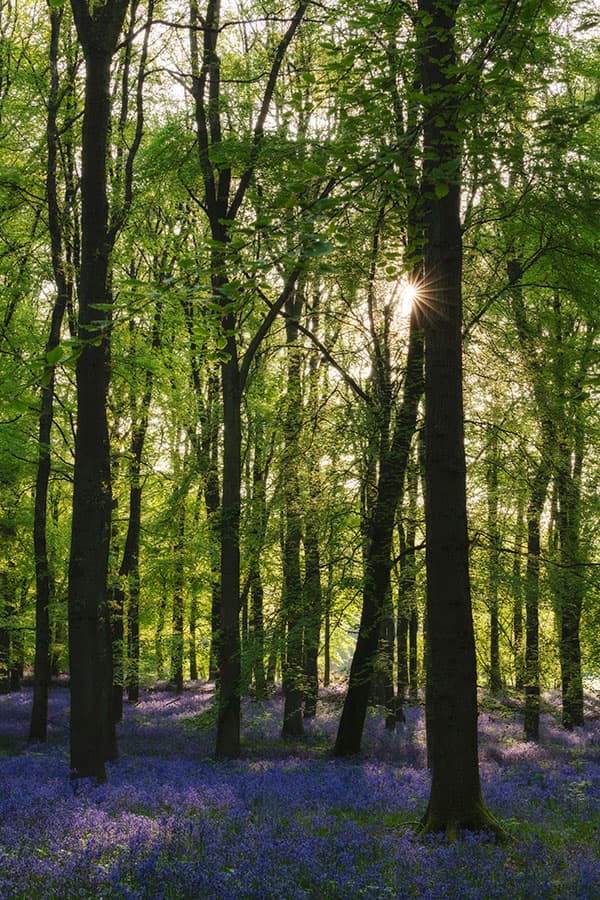
Set a narrow aperture to achieve a sun star popping out from behind a tree. Credit: James Abbott
The standard camera settings previously mentioned will cover most situations, but you may want to stop down the lens in order to create sun stars. To do this, simply include the rising sun in the frame and ideally have it half obscured by a tree. Now stop down the lens to f/16-f/22, and as long as the sun is half obscured in the right way you should see a sun star. If not, adjust the composition until you can capture it.

Add motion blur in post-production for a creative and abstract result. Credit: James Abbott
Special effects are also possible in post-processing. One technique that’s popular, although arguably a bit of a Marmite one, is to add Motion Blur to trees in Photoshop to mimic vertical panning. Create a copy of the Background Layer and then go to Filter>Blur>Motion Blur and set Angle to 90° and Distance to between 1000 and 2000 pixels. To finish off, add a Layer Mask to the blurred Layer and mask out the bottom of the Layer so the sharp ground becomes visible.
Kit list
- Tripod A tripod is a necessity when shooting at sunrise to support the camera and lens during long exposures.
- Telephoto lens Telephoto lenses allow you to eliminate converging verticals. A 70-200mm is best, but superzooms can also work well.
- Polarising filter Filters aren’t required for 95% of woodland shots, but they can be useful for reducing glare and increasing colour saturation.

